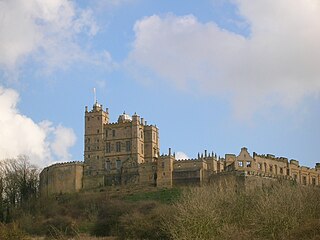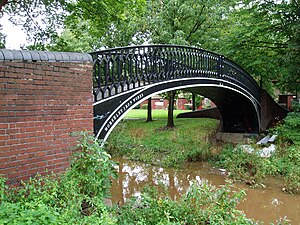
In the United Kingdom, a scheduled monument is a nationally important archaeological site or historic building, given protection against unauthorised change.

In the United Kingdom, a listed building is a structure of particular architectural and/or historic interest deserving of special protection. Such buildings are placed on one of the four statutory lists maintained by Historic England in England, Historic Environment Scotland in Scotland, Cadw in Wales, and the Northern Ireland Environment Agency in Northern Ireland. The term has also been used in the Republic of Ireland, where buildings are protected under the Planning and Development Act 2000, although the statutory term in Ireland is "protected structure".

The Ancient Monuments and Archaeological Areas Act 1979 or AMAAA was a law passed by the UK government, the latest in a series of Ancient Monument Acts legislating to protect the archaeological heritage of England and Wales, and Scotland. Northern Ireland has its own legislation.

An ancient monument can refer to any early or historical manmade structure and/or architecture. Certain ancient monuments are of cultural importance for nations and become symbols of international recognition, including the ruins of Baalbek on Lebanese currency, the Angkor Wat on Cambodian currency and the Great Wall of China on the Chinese currency. There are some countries that display ancient buildings as symbols on their coats of arms as a way to affirm national identity. In this way, ancient monuments in the modern world are used as icons to represent a country. The importance of ancient monuments extends to cultural heritage and how the people of a nation or city identify themselves.

The Protection of Wrecks Act 1973 is an Act of the Parliament of the United Kingdom which provides protection for designated shipwrecks.

There are 37 scheduled monuments in Greater Manchester, a metropolitan county in North West England. In the United Kingdom, a scheduled monument is a "nationally important" archaeological site or historic building that has been given protection against unauthorised change by being placed on a list by the Secretary of State for Digital Culture, Media and Sport; Historic England recommends sites for scheduling to the Secretary of State. Scheduled monuments are defined in the Ancient Monuments and Archaeological Areas Act 1979 and the National Heritage Act 1983. There are nearly 20,000 entries on the schedule, which is maintained by Historic England as part of the National Heritage List for England; more than one site can be included in a single entry. While a scheduled monument can also be recognised as a listed building, Historic England's aim is to set the most appropriate form of protection in place for the building or site. Applications to deschedule a site are administered Historic England, who will carry out an assessment and make a recommendation to the Secretary of State.
Historic England is an executive non-departmental public body of the British Government sponsored by the Department for Culture, Media and Sport. It is tasked with protecting the historic environment of England by preserving and listing historic buildings, scheduling ancient monuments, registering historic parks and gardens and by advising central and local government.
There are ten scheduled monuments in Leicester. These range from the Roman Jewry Wall and Raw Dykes to the medieval Leicester Castle and the early modern King William's Bridge. Several of the scheduled sites have a wide area protecting more than one feature. Seven of the fourteen Grade I listed buildings in Leicester are within the three most central scheduled areas.
Designation is the act of setting aside something, or devoting it to a particular purpose. In the legal planning context, it is also "the action of choosing a place for a special purpose or giving it a special status".

There are ten scheduled monuments in Coventry. In the United Kingdom, a scheduled monument is a "nationally important" archaeological site or historic building that has been given protection against unauthorised change by being placed on a list by the Secretary of State for Digital, Culture, Media and Sport; English Heritage takes the leading role in identifying such sites. Monuments are defined in the Ancient Monuments and Archaeological Areas Act 1979 and the National Heritage Act 1983. Scheduled monuments—sometimes referred to as scheduled ancient monuments—can also be protected through listed building procedures, and English Heritage considers listed building status to be a better way of protecting buildings and standing structures. A scheduled monument that is later determined to "no longer merit scheduling" can be descheduled.
There are thirteen scheduled monuments in Birmingham, England.

There are over 500 scheduled monuments in the English county of Derbyshire.
This is a list of scheduled monuments in Nottingamshire, a county in England.

This is a list of scheduled monuments in the Borough of Erewash in the English county of Derbyshire.
This is a list of scheduled monuments in the district of Amber Valley in the English county of Derbyshire.

This is a list of scheduled monuments in the district of Bolsover in the English county of Derbyshire.
This is a list of scheduled monuments in the Borough of Chesterfield in the English county of Derbyshire.
This is a list of scheduled monuments in the district of South Derbyshire in the English county of Derbyshire.

This is a list of scheduled monuments in the City of Derby unitary authority in the English county of Derbyshire.
This is a list of scheduled monuments in Wiltshire.










